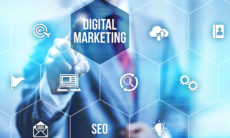These days, everybody has a plan to transform his or her business. Big companies aim to make the way they deliver services and products and how they interact with customers more digitized and more consumer-oriented.
This increasing trend focusing on changing, improving, and radically transforming a business denotes a growing awareness about how society has been evolving and has been affected by innovation coming from different areas, such as technology and digital.
This is lucrative only if it takes place the right way. Companies are used to spending too much time on planning. Most of the time everything happens in a strong, rigid old-fashioned linear way 18-24 months ahead of the implementation.
Therefore, we have expensive strategies that were developed in the past for future implementation. Tools and approaches are outdated at the moment of truth when they have to be implemented.
Because developments are occurring at a rapid pace, everything has to be adaptive and agile, easily-absorbed knowledge, and efficient in delivering prototypes and ready-to-be-implemented ideas in short time frames.
Change is a process that needs constant probing. Fast, incremental changes are more effective than a slow transformation delivering present needs for a future scenario without awareness of the ever-changing context organizations are operating in.
Digital transformation might be the most ambitious and challenging project for most companies today. Transforming business and the customer experience (and understanding customer drop-offs on well-designed, on-paper customer journeys) is a tango that takes two; both the brand and the customers.
But at the same time it is crucial and important to understand how to use the right technology as an enabler and not just buy services or licenses from large software providers. Collaboration is needed. In-depth research becomes mandatory, and internal and external conversation and dialogues are required–together with the ability to listen to user and business needs.
Transformation is a process that happens here and now, through a constant iteration and interaction between the brand and its customers. There is no silver bullet, only hundreds of small steps to be fine-tuned to create a customer journey without drop-offs to provide a frictionless experience to the user and enhance engagement with the brand.
All these steps should be based on a lean approach and be adjustable in real time to the environment and the context, measuring the impact of it and making sure that it is correct and performing well.
To achieve the agile way of working, an adaptive digital cell is necessary. Pods will allow you to run a quick and in-depth digital audit and start doing things differently and better. This ensures that digital transformation is not just another word for your organization but a living, fast-paced approach capable of putting you into the winners’ circle.
Last but not least, you need to find the right people to work with. Choosing a large agency just because of a big name doesn’t guarantee the deliverables or the need for innovation. What you really need are people on board who want to create something worthwhile.









